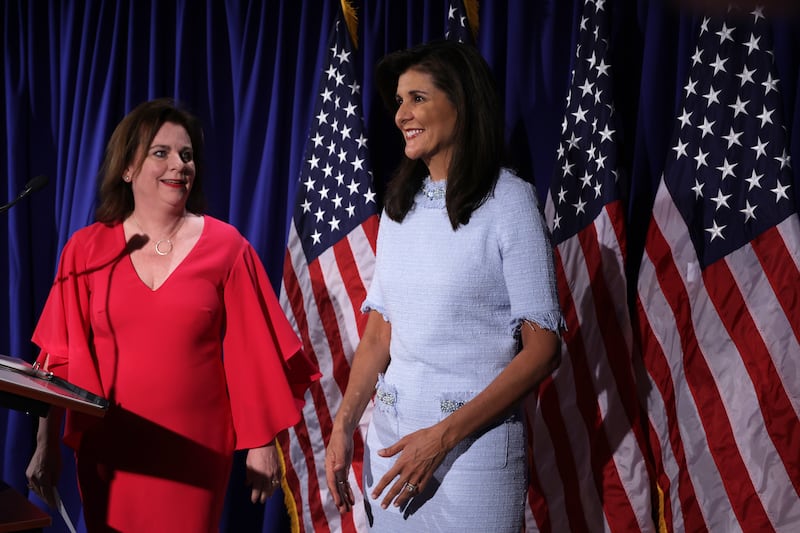A year ago on Saturday the US supreme court eliminated a federal right for a woman to have an abortion. It had been in place for nearly 50 years.
Across the United States a patchwork of rules and rights governing access to terminations are now in place.
The ruling in June 2022 – known as the Dobbs case – which overruled the previous Roe v Wade precedent from 1973, essentially left it up to politicians in individual states to determine abortion rights in their regions.
But this has led to divisions over what should replace the federal across-the-board right to a termination.
READ MORE
Should there be outright bans? Should there be gestational limits after which abortions should not be permitted? Should these be set at six weeks or 12 weeks or some other time frame? Should there be exceptions to these rules, for example where the health or life of the mother are in jeopardy?
There have been disputes over access to medication abortions. Already there has been one court challenge to the authorisation of mifepristone. This issue may ultimately end up back in the supreme court
In the background, the rows over abortion are seeping into national politics. Joe Biden’s Democratic Party made protecting abortion rights a centrepiece of the midterm elections last November and did far better than expected, whereas Republicans, who campaigned for abortion restrictions, did worse.
And at more local level voters in Republican states such as Kansas, Kentucky and Montana rejected attempts to curtail abortion access. This, in turn, has led to attempts in some other states to make it harder for abortion rights proposals to make their way on to similar ballots.
The supreme court ruling last June was supposed to end the arguments over abortion that had raged for decades. However, there have been disputes over access to medication abortions. Already there has been one court challenge to the authorisation of mifepristone – the first pill in a two-drug regimen for medication abortions. This issue may ultimately end up back in the supreme court.
The pro-choice Guttmacher Institute this week said in an national assessment that abortion was completely banned in 13 states: Alabama, Arkansas, Idaho, Kentucky, Louisiana, Mississippi, Missouri, North Dakota, Oklahoma, South Dakota, Tennessee, Texas and West Virginia. It said abortion was unavailable in Wisconsin due to ongoing legal complexities.
In a number of other states, restrictions on abortion have been blocked by courts.
In Florida a six-week ban on abortion already signed into law could come into effect shortly if permitted by the state’s supreme court.
In some areas where the law remains unclear, some abortion providers have suspended operations due to fears of legal consequences or possible criminal prosecution.
On the other hand, some more liberal states have moved to protect abortion rights. Voters in Vermont, California and Michigan enshrined a right to a termination in their constitutions last year, and Minnesota codified abortion rights into law in January.
A report by the Society of Family Planning suggests many women in areas where bans or restrictions were put in place have gone elsewhere to secure abortions.
“Our data suggests that many abortion seekers living in states with bans may have travelled to other nearby states for care, and that increases are seen in states close to states with bans, even if those receiving states had abortion restrictions such as mandated in-person counselling and waiting periods.”
Some anti-abortion campaigners and Republican politicians have argued that the US Congress should legislate for a nationwide abortion ban. Republican presidential front-runner Donald Trump has refused to say whether he would back a federal prohibition
However, overall in the wake of the ruling last June, the number of terminations carried out has fallen. “Since the Dobbs decision, compared to the average monthly number of abortions observed in the pre-Dobbs period of April and May 2022, there were 25,640 cumulative fewer abortions from July 2022 to March 2023.”
Some anti-abortion campaigners and Republican politicians have argued that the issue should not now be left to individual states, but that the US Congress should legislate for a nationwide abortion ban. Republican presidential front-runner Donald Trump has refused so far to say whether he would back any such federal prohibition.
Democrats, on the other hand, want Congress to reintroduce in law the right to abortion originally in place under Roe v Wade.

Marjorie Dannenfelser, president of Susan B Anthony Pro-Life United States, said this week new polling suggested that nearly 60 per cent of voters supported Congress passing legislation to protect the unborn after 15 weeks’ gestation, with the exceptions of cases of rape, incest and where the life of the mother is at risk.
“A year after Dobbs, nearly half the country has laws reflecting the will of the people. Americans strongly agree Congress also has a role to play in protecting babies from brutal late-term abortions, when they can feel pain.”
However, this week the US first lady Jill Biden said that the Dobbs ruling “took away women’s constitutional rights – their ability to make their own healthcare decisions”. She argued that the consequences of abortion bans introduced by various states went “far beyond the right to choose”.
“Women are being denied access to medications that treat arthritis and cancer – even when they aren’t pregnant. Survivors of rape and incest are being forced to travel across state lines for care. Doctors have stopped providing the care that they know is best for their patients because they don’t know which procedures are legal.”
She said women had been turned away from emergency rooms, faced delayed treatments and were mourning loss “while barely surviving the resulting infections”.
“The Dobbs decision was devastating. And Joe is doing everything he can to fight back.”













